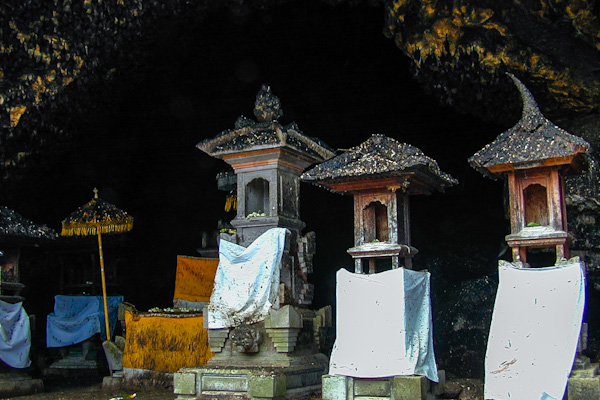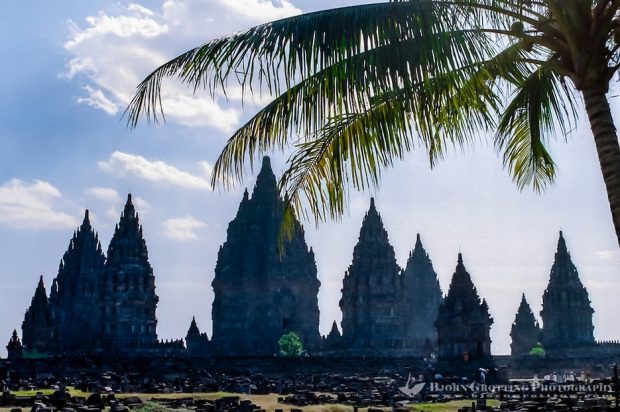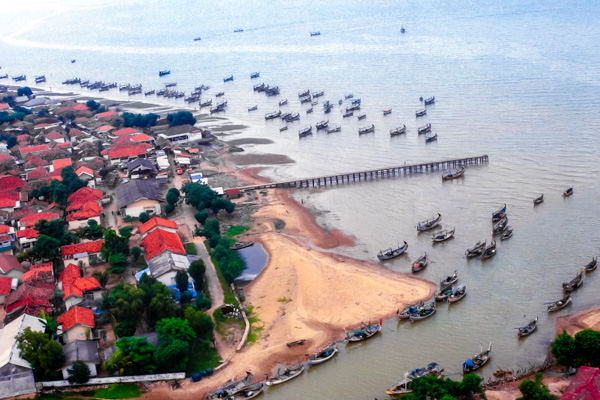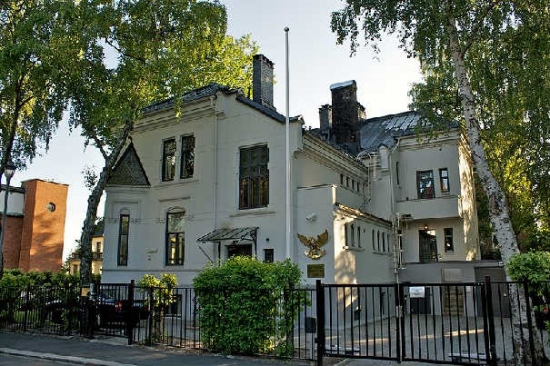Beginning in the 1890s, paleontologists discovered fossil remains of creatures on the island of Java that, while probably not the direct ancestors of modern humans, were closely related to them. These Javan hominids, known by scientists as Homo erectus, lived 500,000 years ago and some possibly as long as 1.7 million years ago. Their remains are identified as Jetis–the earlier specimens found in eastern Java–and Trinil–later specimens found in Central Java, including the Solo River area.

Evidence of probable descendants of the Trinil erectus, known as Homo soloensis or Solo Man, was found at Ngandong, also in Central Java; these descendants are thought to have evolved between 500,000 and 100,000 years ago. Assemblages of stone tools have not clearly been tied to Homo soloensis, but there is evidence that these early Homo sapiens had a rudimentary social organization (small hunting and gathering bands) and used simple tools around 40,000 years ago.
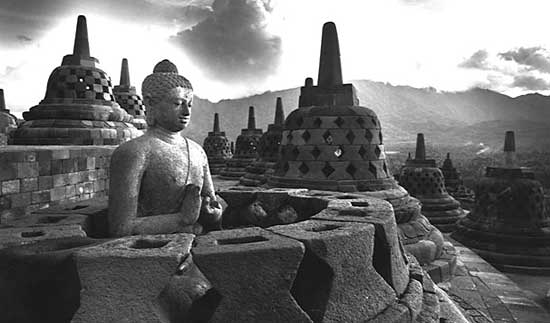
Many observers agree that the modern inhabitants of Indonesia may be descended from Homo erectus. Although insufficient paleographical information makes it impossible to determine precisely the dates of migrations by modern Homo sapiens, contrary to earlier hypotheses of migration from the Malay Peninsula, many experts believe that Indonesia’s early population– comprised of the ancestors of most of its present inhabitants–was the product of continued hominid evolution within the archipelago. There was, of course, continuing seepage of other populations into the gene pool, contributing to the complex ethnographic picture of Indonesia. That the archipelago may have developed its own Homo sapiens line has not been ruled out by some scholars.
Although Indonesia is extremely diverse ethnically (more than 300 distinct ethnic groups are recognized), most Indonesians are linguistically–and culturally–part of a larger Indo-Malaysian world encompassing present-day Malaysia, Brunei, the Philippines, and other parts of insular and mainland Asia. Early inhabitants had an agricultural economy based on cereals, and introduced pottery and stone tools during the period 2500 to 500 B.C. During the period between 500 B.C. and A.D. 500, as the peoples of the archipelago increasingly interacted with South and East Asia, metals and probably domesticated farm animals were introduced.
The Spread of Indian Civilization
During the early centuries A.D., elements of Indian civilization, especially Hinduism and Mahayana Buddhism, were brought to Sumatra and Java and stimulated the emergence of centralized states and highly organized societies. Scholars disagree on how this cultural transfer took place and who was involved. Apparently, traders and shippers, not just Indian but Indonesian as well, were primarily responsible. Small indigenous states existed in the coastal regions of western Indonesia at a time when Indian Ocean trade was flourishing.
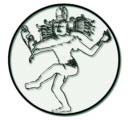
But, unlike the Islamic culture that was to come to Indonesia nearly 1,000 years later, India in the first centuries A.D. was divided into a rigid caste hierarchy that would have denied many features of Indian tradition to relatively low-caste merchants and sailors. Historians have argued that the principal agents in Indianization were priests who were retained by indigenous rulers for the purpose of enhancing their power and prestige
– atherosclerosis and cardiovascular risk factors cheap viagra or couples addresses specific psychological or.
. Their role was largely, although not exclusively, ideological. In Hindu and Buddhist thought, the ruler occupied an exalted position as either the incarnation of a god or a bodhisattva (future Buddha). This position was in marked contrast to the indigenous view of the local chief as merely a “first among equals.” Elaborate, Indian-style ceremonies confirmed the ruler’s exalted status. Writing in Sanskrit brought literacy to the courts and with it an extensive literature on scientific, artistic, political, and religious subjects. Some writers are skeptical about the role of priests because high-caste Brahmins would have been prohibited by Brahmanic codes from crossing the polluting waters of the ocean to the archipelago. Some must have gone, however, probably at the invitation of Southeast Asian courts, leading to the hypothesis that Hinduism may indeed have been a proselytizing religion. In the early nineteenth century, the British faced mutinies by their high-caste Indian troops who refused to board ships to fight a war in Burma. Perhaps such restrictions were less rigid in earlier times, or the major role in cultural diffusion was played by Buddhists, who would not have had such inhibitions.
Although the culture of India, largely embodied in insular Southeast Asia with the Sanskrit language and the Hindu and Buddhist religions, was eagerly grasped by the elite of the existing society, typically Indian concepts, such as caste and the inferior status of women, appear to have made little or no headway against existing Indonesian traditions. Nowhere was Indian civilization accepted without change; rather, the more elaborate Indian religious forms and linguistic terminology were used to refine and clothe indigenous concepts. In Java even these external forms of Indian origin were transformed into distinctively Indonesian shapes. The tradition of plays using Javanese shadow puppets (wayang*), the origins of which may date to the neolithic age, was brought to a new level of sophistication in portraying complex Hindu dramas (lakon) during the period of Indianization. Even later Islam which forsakes pictorial representations of human brings, brought new developments to the wayang tradition through numerous refinements in the sixteenth to eighteenth centuries.
Indianized Empires
Source: Based on information from M.C. Ricklefs, A History of Modern Indonesia: c. 1300 to the Present, Bloomington, 1981, 311.
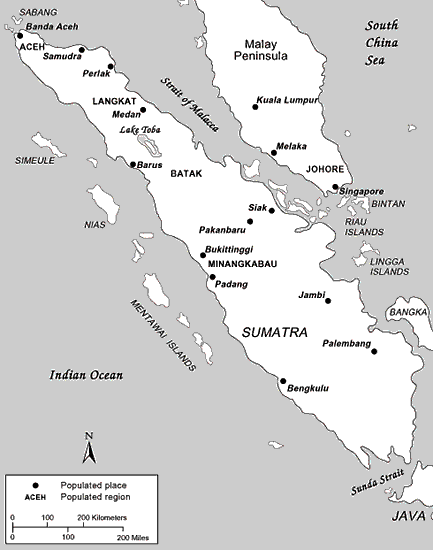
Although historical records and archaeological evidence are scarce, it appears that by the seventh century A.D., the Indianized kingdom of Srivijaya, centered in the Palembang area of eastern Sumatra, established suzerainty over large areas of Sumatra, western Java, and much of the Malay Peninsula (see fig. 2). Dominating the Malacca and Sunda straits, Srivijaya controlled the trade of the region and remained a formidable sea power until the thirteenth century. Serving as an entrepôt for Chinese, Indonesian, and Indian markets, the port of Palembang, accessible from the coast by way of a river, accumulated great wealth. A stronghold of Mahayana Buddhism, Srivijaya attracted pilgrims and scholars from other parts of Asia. These included the Chinese monk Yijing, who made several lengthy visits to Sumatra on his way to India in 671 and 695, and the eleventh-century Buddhist scholar Atisha, who played a major role in the development of Tibetan Buddhism.
During the early eighth century, the state of Mataram controlled Central Java, but apparently was soon subsumed under the Buddhist Sailendra kingdom. The Sailendra built the Borobudur temple complex, located northwest of Yogyakarta. The Borobudur is a huge stupa surmounting nine stone terraces into which a large number of Buddha images and stone bas-reliefs have been set. Considered one of the great monuments of world religious art, it was designed to be a place of pilgrimage and meditation. The basreliefs illustrate Buddhist ideas of karma and enlightenment but also give a vivid idea of what everyday life was like in eighthcentury Indonesia. Energetic builders, the Sailendra also erected candi, memorial structures in a temple form of original design, on the Kedu Plain near Yogyakarta.
The late ninth century witnessed the emergence of a second state that is noted for building a Hindu temple complex, the Prambanan, which is located east of Yogyakarta and was dedicated to Durga, the Hindu Divine Mother, consort of Shiva, the god of destruction. From the tenth to the fifteenth centuries, powerful Hindu-Javanese states rivalling Srivijaya emerged in the eastern part of the island. The kingdom of Kediri, established in eastern Java in 1049, collected spices from tributaries located in southern Kalimantan and the Maluku Islands, famed in the West as the Spice Islands or Moluccas. Indian and Southeast Asian merchants among others then transported the spices to Mediterranean markets by way of the Indian Ocean.
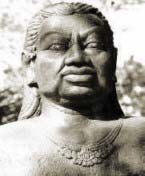
The golden age of Javanese Hindu-Buddhist kingdoms was in the late thirteenth and fourteenth centuries. Although the eastern Javanese monarch Kertanagara (reigned 1268-92) was killed in the wake of an invasion ordered by the Mongol emperor Khubilai Khan, his son-in-law, Prince Vijaya, established a new dynasty with its capital at Majapahit and succeeded in getting the hard-pressed Mongols to withdraw. The new state, whose expansion is described in the lengthy fourteenth-century Javanese poem Nagarakrtagama by Prapanca, cultivated both Shivaite Hinduism and Mahayana Buddhism. It established an empire that spread throughout much of the territory of modern Indonesia.
The empire building was accomplished not by the king but by his prime minister, Gajah Mada, who was virtual ruler from 1330 to his death in 1364. Possibly for as long as a generation, many of the Indonesian islands and part of the Malay Peninsula were drawn into a subordinate relationship with Majapahit in the sense that it commanded tribute from local chiefs rather than governing them directly. Some Indonesian historians have considered Gajah Mada as the country’s first real nation-builder. It is significant that Gadjah Mada University (using the Dutch-era spelling of Gajah Mada’s name), established by the revolutionary Republic of Indonesia at Yogyakarta in 1946, was–and remains–named after him. By the late fourteenth century, Majapahit’s power ebbed. A succession crisis broke out in the mid-fifteenth century, and Majapahit’s disintegration was hastened by the economic competition of the Malay trading network that focused on the state of Melaka (Malacca), whose rulers had adopted Islam. Although the Majapahit royal family stabilized itself in 1486, warfare broke out with the Muslim state of Demak and the dynasty, then ruling only a portion of eastern Java, ended in the 1520s or 1530s.
*wayang
Literally, “shadow.” A dramatic form in several major variations, in which puppets or human performers, and sometimes both, portray gods, heroes, villains, and other characters in literary epics. The wayang kulit is shadow theater using highly decorated flat leather puppets.

